3. Circular Fashion¶
“It can be defined as clothes, shoes or accessories that are designed, sourced, produced and provided with the intention to be used and circulated responsibly and effectively in society for as long as possible in their most valuable form, and hereafter return safely to the biosphere when no longer of human use.”
Circular fashion means that every part of the life span of a garment is cyclical – it starts with design of a piece and how much longevity and timelessness it has, then onto the materials and whether or not they are sustainable, before the making of the item – is its production fair and ethical; are workers and animals rights being upheld? Once the piece has become tired, it should be repaired or redesigned, then – rather than being binned – rented, swapped or sold at second-hand. All this means less will be bought and less will left ruining our planet.
| Circular Fashion |
|---|
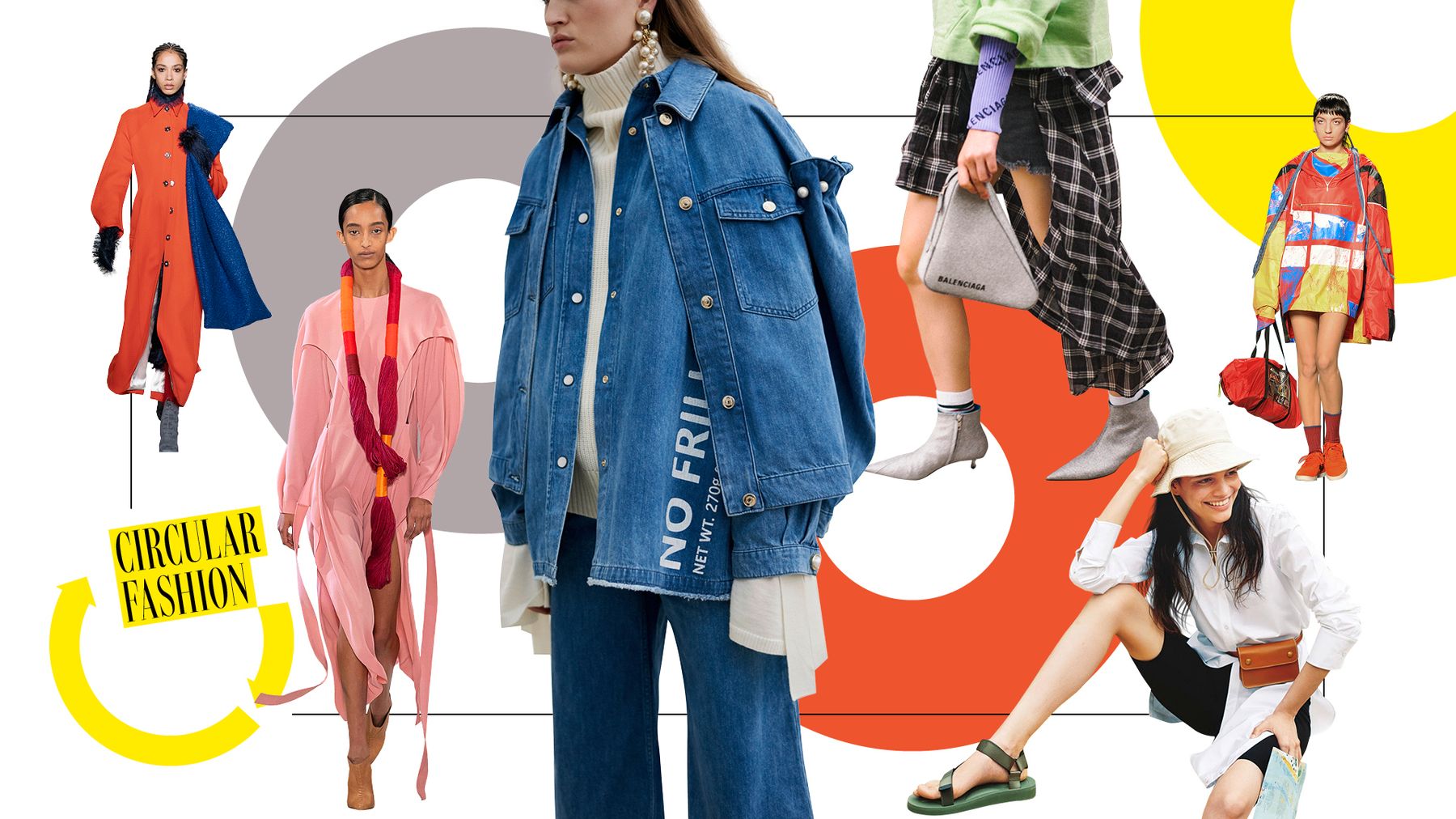 |
In this week I learnt about the circular fashion.
Assignment¶
Study and understand the concept of circular fashion and then design and fabricate a prototype using different techniques and materials.
Inspiration¶
| Circular Fashion Documentary |
|---|
This video DIY tutorial shows an easy way to make the purse bag by own hands from scratch.
| Circular Fashion Shoulder Bag |
|---|
4.1. Introduction¶
| Circular Fashion |
|---|
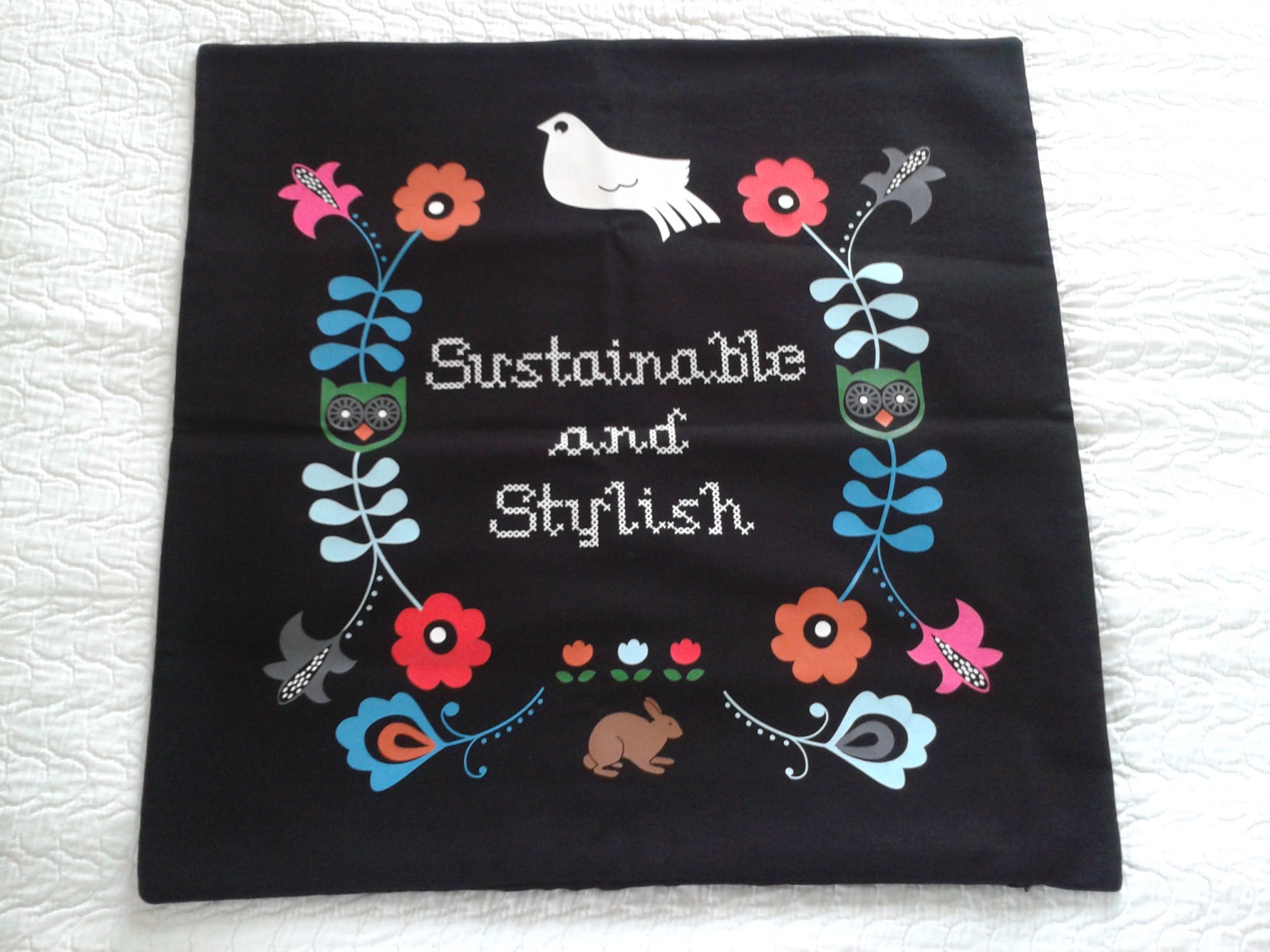 |
If fashion refers to a piece of garment, an accessory, or a pair of shoes, circular fashion can be defined as any fashion item that is:
1 - Designed so that its sub-components can be disassembled or separated to facilitate repair, remake, reuse and eventually material recycling at its end of use;
2 - Designed with high quality materials and in timeless style to maximize its durability, longevity and attractiveness to many users (if passed on to new users);
3 - Designed on demand (custom-made) in order to be more optimally designed for its specific user in terms of fabric/material, style and fit, thus increasing its perceived value and likely lifespan;
4 - Produced with non-toxic, high quality and preferably biodegradable materials, so that its material(s) may be safely biodegraded and composted at the end of use; or produced with non-toxic synthetic materials that may be effectively recycled (such as recyclable polyester);
5 - Produced in such a way that all waste generation is minimized during production, and all potential spill material and rest products can be reclaimed and reused as raw material for other processes, thus minimizing the extraction of new virgin material;
6 - Produced, transported and marketed using renewable energy, such as wind or solar power, wherever possible, and using water and other raw materials effectively and safely throughout production and distribution;
7 - Can be used by multiple users throughout its life time through swapping, borrowing, rental, redesign, or second hand services, thus extending its user life; and
8 - Can be safely and effectively reclaimed and recycled, whereby its components are utilized as raw material for manufacturing of new products, or are biodegraded and turned into biological nutrients for microorganisms in the soil.
Tessellation¶
An arrangement of shapes closely fitted together, especially of polygons in a repeated pattern without gaps or overlapping is known as Tessellation.
| Geometric Arabic Decoration |
|---|
| Geometric Weaved Patterns |
|---|
Required Tools and Sofwatres¶
| Equipmet and Tools | ||
|---|---|---|
| Rhinoceros 6 Software | Gweike LC 1390S Laser Machine | Colored thick felt (2mm) |
| LaserCut Software | Colored Cardstock Paper | Scissors |
| Silhoette Cameo 3 | Silhouette Studio Software | Lemon, Salt |
I have followed this Mathematics to Art and The Muslim and Compass to understand how to make complicated patterns with compass and ruler on the paper.
1- I find the 10 sided polygon with very interesting design.
| Pttern Making with Polygons |
|---|
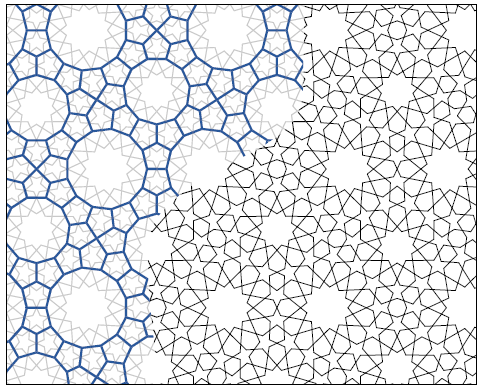 |
2- For interlocking the pieces there are several techniques ; however, fastening joints of the pieces is one of the most interesting techniques. Also weaving strips of a fabric can give very nice technique as shown below.
Design¶
1 - I used scissors and paper to get startted with simple design and then models as shown below.
| Circular Fashion |
|---|
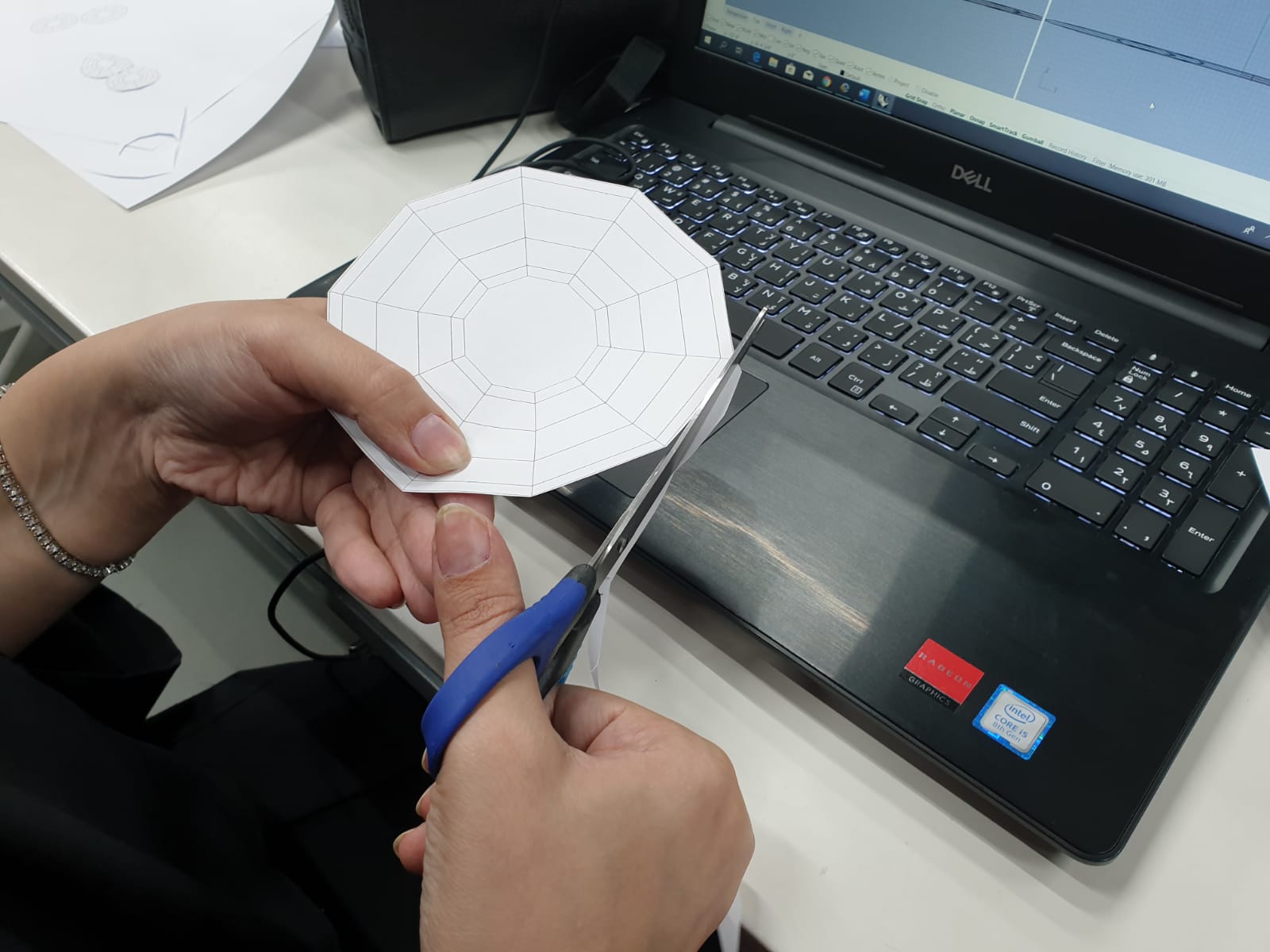 |
 |
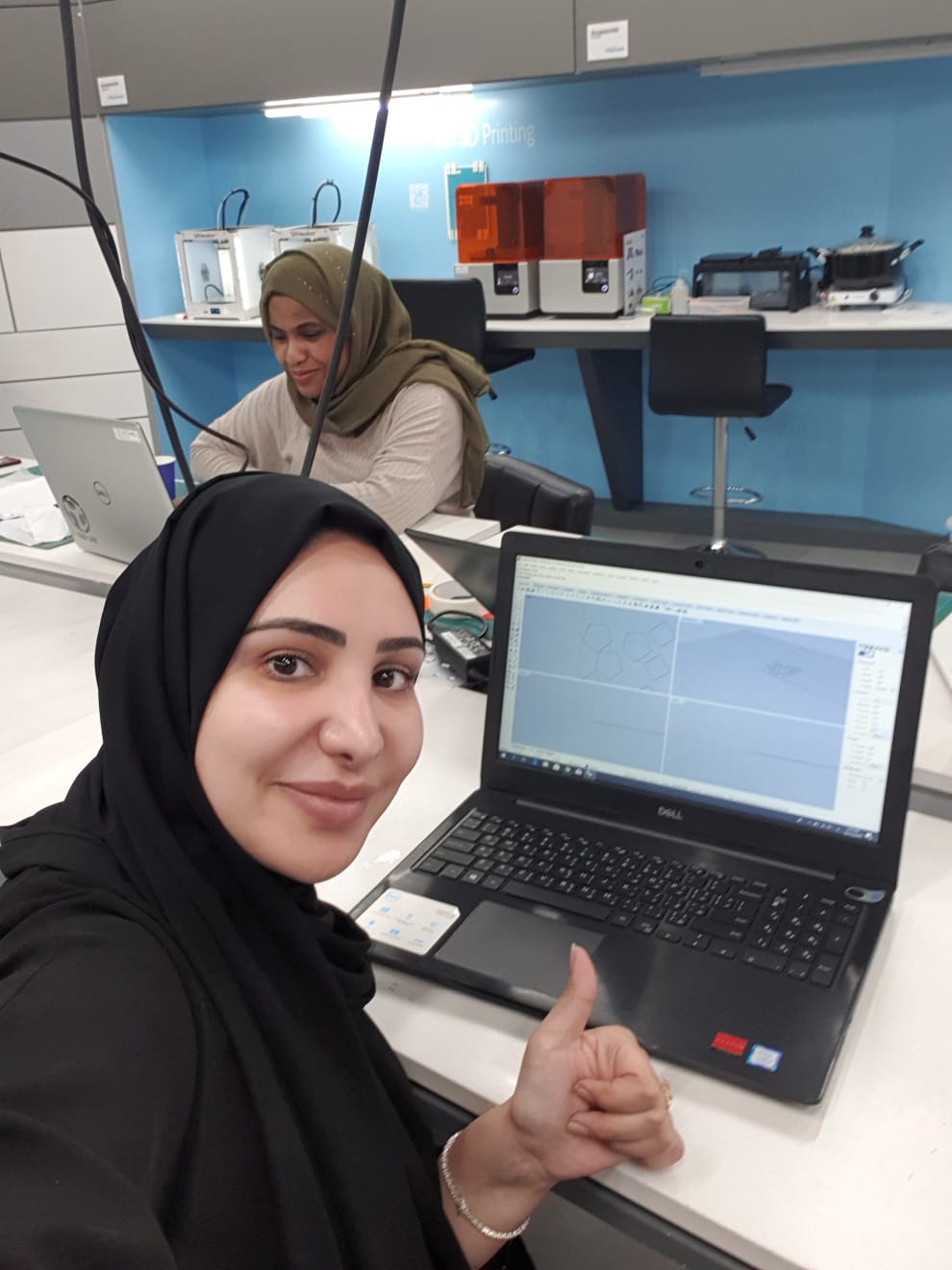 |
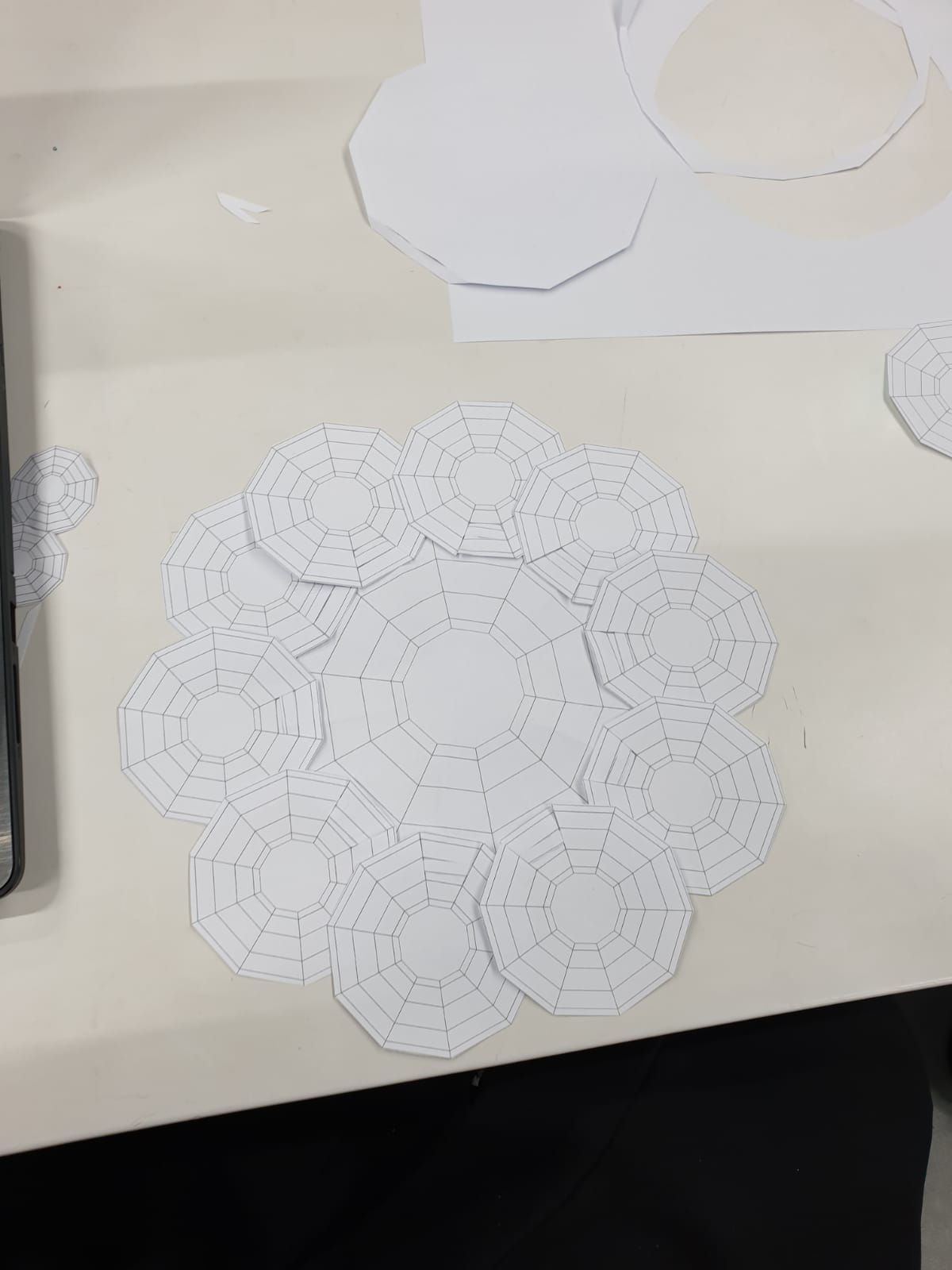 |
2 - Then I used interlocking technique.
3 - I made 2-D design models using rhinocersos software for pattern .
The first 2D shape was the octagon.
Then i came up with second 2D shape which was the Islamic design star with 8 vertices.
I used many techniques for interlocking but will select one which will look better for me.
4 - I exported the file as DXF extension to cut through the computer controlled machine
Cutting the 2D Design¶
To cut the modules and check the visibility of the design I used Silhouette Cameo 3 machine. It will give me a visual affect of the real design after the cutting.